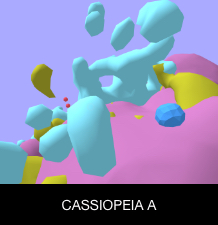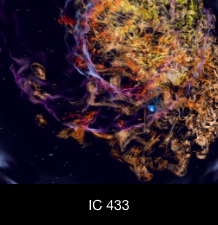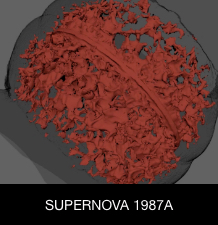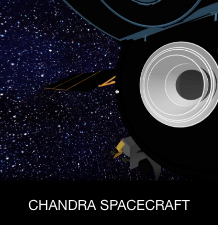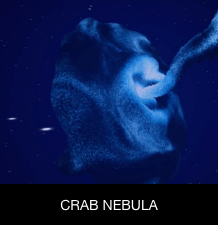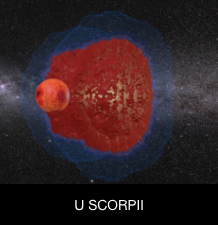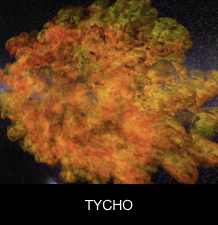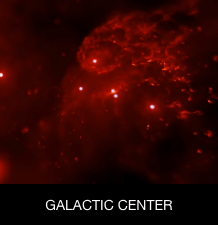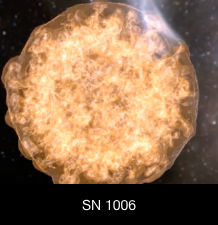

Introduction:
Since ancient times, the study of astronomy has largely been limited to the flat, two-dimensional projection of what appears on the sky. However, just like a botanist puts a plant under a microscope or a paleontologist digs for fossils, astronomers would like even more "hands on" ways to analyze objects in space.
To that end, astronomers are combining ingenious techniques with rich datasets from today’s most powerful telescopes — including NASA’s Chandra X-ray Observatory — to move from observing objects in two dimensions to investigating them in three. At the same time, the technology of virtual, augmented, and extended reality (VR, AR, and XR) platforms now allow users to immerse themselves and interact with digital environments in ways that were impossible just a short time ago.
These pages highlights some of the projects that the Chandra X-ray Center leads and participates in, in the realm where exciting developments in space science and technology intersect. We invite you to look, download, and explore your Universe like you never have before.
Cassiopeia A
Cassiopeia A being converted for the cave or "Yurt" environment as well as the Oculus Rift.
One of the most famous objects in the sky, the Cassiopeia A supernova remnant, can be seen like never before, thanks to NASA's Chandra X-ray Observatory, and Brown University. A three-dimensional virtual reality (VR) with augmented reality (AR) version of the 3D data allows you to walk inside the debris from a massive stellar explosion, select the parts of the supernova remnant to engage with, and access short captions on what the materials are.
Scientists combined data from Chandra, NASA's Spitzer Space Telescope, and ground-based facilities to construct a unique 3D model of the 300-year old remains of a stellar explosion that blew a massive star apart, sending the stellar debris rushing into space at millions of miles per hour. A collaboration with Brown University's Center for Computation and Visualization allowed the 3D astronomical data collected on Cassiopeia A, or Cas A for short, to be featured in the VR/AR program -an innovation in digital technologies with public, education, and research-based impacts.
To create the 3D data visualization, Chandra scientists took advantage of both a previously known phenomenon, the Doppler effect, and a new technology that bridges astronomy and medicine. When elements created inside a supernova, such as iron, silicon and argon, are heated they emit light at specific wavelengths. The motion of the material Doppler-shifts the light so that material moving towards the observer is seen at shorter wavelengths and material moving away is seen at longer wavelengths. Since the amount of the wavelength shift is related to the speed of motion, one can determine how fast the debris are moving in either direction. Because Cas A is the result of an explosion, the stellar debris are expanding radially outwards from the explosion center. Using simple geometry, the scientists were able to construct a 3-D model using all of this information. A program called 3-D Slicer, modified for astronomical use by the Astronomical Medicine Project at Harvard, was used to display and manipulate the 3-D model.
This visualization shows that there are two main components to this supernova remnant: a spherical component in the outer parts of the remnant and a flattened (disk-like) component in the inner region. The spherical component consists of the outer layer of the star that exploded, probably made of helium and carbon. These layers drove a spherical blast wave into the diffuse gas surrounding the star. The flattened component — that astronomers were unable to map into 3-D prior to these recent observations — consists of the inner layers of the star. It is made from various heavier elements, not all shown in the visualization, such as oxygen, neon, silicon, sulphur, argon and iron.
High-velocity plumes, or jets, of this material are shooting out from the explosion in the plane of the disk-like component mentioned above. Plumes of silicon appear in the northeast and southwest, while those of iron are seen in the southeast and north. These jets were already known and Doppler velocity measurements have been made for these structures, but their orientation and position with respect to the rest of the debris field had never been mapped before now.
The insight into the structure of Cas A gained from this 3-D visualization is important for astronomers who build models of supernova explosions. Now, they must consider that the outer layers of the star come off spherically, but the inner layers come out more disk-like with high-velocity jets in multiple directions.
The VR project is being made available in an open access format suitable for VR caves as well as on the Oculus Rift platform. Please contact Kimberly Arcand for more information on accessing those files.
The project coordinators also created a version that works with Google Cardboard or similar portable VR glasses and a smartphone connected to the Internet. To access that file, launch this URL https://chandra.si.edu/vr/casa/ on your smartphone (or iPod) in a browser window such as Safari. In that browser window, click the icon that looks like square glasses in the lower right of the page to put it in VR mode and place the phone/iPod in the Google Cardboard or similar portable VR glasses.
Additionally, Chandra has worked with the Smithsonian Learning Lab to create a browser-based interactive 3D application, and 360 degree video that works with Google Cardboard for Chandra's 3D Cas A object. The activity has related educational resources and activities at http://s.si.edu/cas-a
Or download the Cas A 3D model in a printable format at https://chandra.si.edu/deadstar/deadstar.html
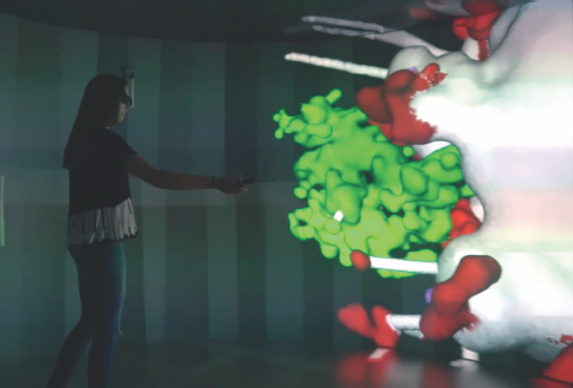
Virtual reality is an immersive experience with three-dimensional information in a computer generated environment that can be interacted with using equipment such as goggles/headsets with sensors.
This VR demonstration was adapted from a "Yurt" or cave-like environment to a personal immersion experience with Oculus Rift. A less expensive Google Cardboard version is also being prepared.
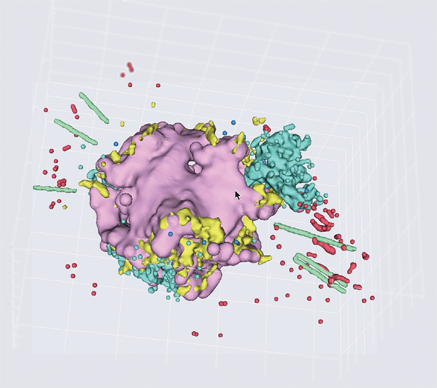
Screenshot of Cassiopeia A being coded for a personal VR environment. 3D model/VR: NASA/CXC/MIT/T.Delaney et al.; NASA/CXC/SAO/K.Arcand & A.Jubett, Brown Univ./T.Sgouros, E.Jiang, & A.Stewart
Credit:
The scientific 3D model was created by Tracey Delaney (then of MIT) & colleagues. 3D files and VR applications of Cas A were created under the direction of Kimberly Arcand, NASA/CXC/SAO with April Jubett (SAO) and by Tom Sgouros, Elaine Jiang and Alexander Stewart of Brown University.
Format:
Oculus Rift and Go formats available upon request. Phone-friendly version at https://chandra.harvard.edu/vr/casa/
RESOURCES
Please take our quick survey and let us know what you think:
https://www.surveymonkey.com/r/walkamongstars
Press release for Cas A VR:
https://chandra.si.edu/press/17_releases/press_122717.html
Published: December 2019
